| Article ID | Journal | Published Year | Pages | File Type |
|---|---|---|---|---|
| 2430451 | Developmental & Comparative Immunology | 2007 | 13 Pages |
The larvae of freshwater mussels in the order Unionoida are obligate parasites on fishes, on which they metamorphose into juveniles. Bluegill sunfish (Lepomis macrochirus) acquire resistance against glochidia of the freshwater mussel Utterbackia imbecillis after 2 infections. In order to study the systemic and mucosal antibody response associated with acquired resistance, sera from experimentally infected fish were collected at 10-d intervals during 4 sequential infection periods and from naïve fish. Enzyme-linked immunosorbant assays (ELISA) revealed that fish exhibited a humoral and mucosal antibody response around day 20 after the 1st infection which was followed by second antibody response beginning at day 60 (day 20, 3rd infection) that persisted until the end of the collection period. Western blots of glochidial proteins probed with the sera revealed that the profile of proteins recognized by antibodies produced by fish changed over the course of multiple infections. Serum collected from fish at day 20 (peak of primary response) contained antibodies against ∼39 and 91 kDa proteins. Immunohistochemical studies on whole-mount glochidia probed with serum from these fish demonstrated that the antibodies recognize granular structures located between the larval mantle and shell. Serum collected from fish during the secondary antibody response (days 60–80) bound additional protein bands in Western blots. Those antibodies recognized other cells of the larval mantle, most prominently in a ciliated region that contains the primordia of the gills and organs of the juvenile and adult mussel.
